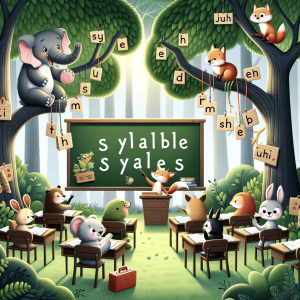Phonetics, the study of sounds in human language, can be a complex field for beginners. However, understanding the basics is crucial for improving pronunciation and communication skills. One fundamental aspect of phonetics is syllables – the building blocks of words. In this blog post, we will simplify the concept of syllables and provide a beginner-friendly guide to mastering their usage.

What are Syllables?
Syllables are units that help us break down words into smaller parts based on speech patterns or sound sequences. They consist of one or more vowel sounds accompanied by consonants before or after them. For example, let’s consider the word “cat.” It has only one syllable because it contains a single vowel sound (/æ/) surrounded by two consonant sounds (/k/ and /t/). We gain insights into pronunciation patterns by identifying these individual units within words.
Counting Syllables:
To count how many syllables exist in a word accurately, you need to pay attention to vowels rather than the letters since not all letters represent distinct vowel sounds (e.g., ‘y’ may act as both a consonant and a vowel). Here are some general guidelines:
1) Each separate vowel sound usually represents its syllable.
Examples: “rain” (one), “pie” (one), “audio” (three)
2) Consecutive vowels often form diphthongs where two adjacent vowels blend but create just one syllable.
Example: “coin,” pronounced like [koyn], forms only one unit despite having two consecutive vowels (‘o’ + ‘i’).
3) Silent letters do not contribute towards creating additional syllabic divisions.
Example: The word “know” has only one audible sound despite containing four letters; thus, it forms just one syllable.
Breaking Down Syllables:
Understanding how to break words into syllables is essential for proper pronunciation. Here are some helpful rules:
1) Each word must have at least one syllable, even containing only a vowel sound.
Examples: “I” (one), “a” (one)
2) When two or more consonants appear together between vowels, they usually belong to different syllables.
Example: In the word “basket,” we divide it as bas-ket since ‘s’ and ‘k’ represent separate sounds in distinct syllables.
3) Compound words can be divided by identifying each root word.
Example: The compound word “sunflower” consists of two roots – sun + flower – forming two separate units.
Conclusion:
Mastering phonetics starts with understanding the concept of syllables. By breaking down words into smaller speech patterns, we gain insights into pronunciation techniques that enhance our communication skills. Remember that counting and dividing syllables requires focusing on vowel sounds rather than the letters. With practice, you will become proficient in recognizing these building blocks of language and improve your overall fluency.
So why wait? Start exploring the world of phonetics today by mastering the art of simplifying syl